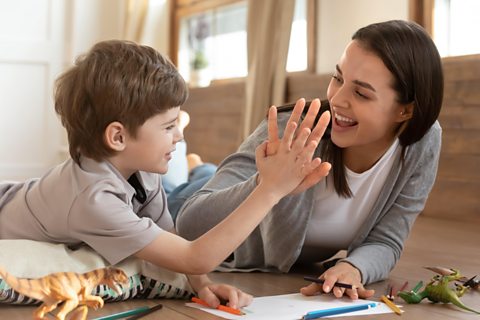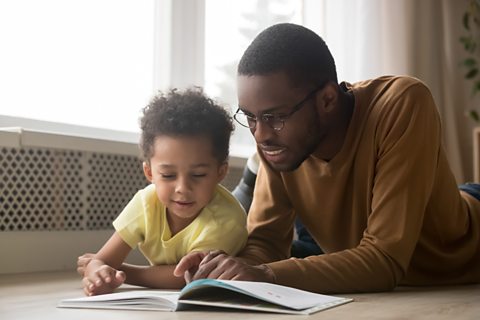
What is phonics?
Amy-Louise Peach from Little Learners explores phonics and how you can help your child practice at home.
You may have heard about phonics at a parentsโ evening, or even from your own child on the walk home from school.
In the Early Years, phonics is a huge part of learning. From being able to recognise different sounds all around them, to sounding out whole words, phonics is where a childโs journey to reading and writing begins!
These tips will help you support your childโs learning to make phonics a fun and engaging experience for you both.

1. It starts with you
The way we teach phonics (and as a result, reading and writing) has changed a lot over the last couple of decades, so your own memories of learning ABCs might not match your childโs way of learning today.
Itโs important to make sure youโre pronouncing each sound correctly and avoiding common mistakes. For example, the โmโ sound should be โmmmmโ, but many adults incorrectly place an โuhโ sound on the end, so it sounds more like โmuhโ.
The sounds this happens to the most are usually f, l, m, n, r, s, and t. Donโt worry if you do this - itโs easy to change the habit once you know!
2. Model: show your child how to do it
Once you feel a bit more confident with phonics, itโs helpful to show your child how we say each sound. Let them clearly see your mouth when you speak so they can watch your mouth move differently for each sound or word. Join them in sounding out some words, so they can observe the technique before trying it themselves.
Don't panic if you get something wrong - itโs always good for children to see that grown-ups make mistakes too. Correct yourself and carry onโฆ unless your child has already corrected you, in which case theyโre clearly learning something!

3. Remember: itโs not just about letters
When children reach Reception, there is a big emphasis on learning which sounds correspond to which letters. Before this stage though, children have been learning phonics skills since they were born; differentiating between sounds such as their motherโs voice and a phone ringing, or trees rustling and birds tweeting.
You can play with sound by using instruments (or simply drumming on anything they can find), listening to stories and joining in with nursery rhymes are all activities that build a good foundation for later letter and sound learning.
4. Make reading fun!
Reading should be a fun, shared experience. Read together, read to your child, read in a tent, in the garden, upside downโฆ shake things up a bit!
Even if your child is a confident reader, reading together (and being read to) allows them to share the experience and be exposed to that all-important modelling. Read books that interest your child, even if they canโt read all of the words themselves. Read fiction and non-fiction, read street signs, posters and recipes. Find the wider world of words!

5. Work at your child's level
If a child is struggling to sound out the word โcatโ, thereโs no point in asking them to read the word โthoughtโ. Children can become very self-conscious when they feel they arenโt โgoodโ at reading, so although we want to challenge them, we also need to help build their confidence.
Phonics always requires repetition and sometimes it takes a lot of it, but there are plenty of games and activities you can do to make it more enjoyable.

Activities
Here are some activities you can try at home to support your child with their phonics learning:
- Listening Walk
As we now know, phonics isnโt just about letters. Try going on a walk, through a park for example, and noticing all of the individual sounds you can hear. In the park, you might hear leaves crunching under your feet, children laughing as they play and bushes rustling in the breeze. In a busy city-centre, you might hear cars passing, people chatting and a cyclistโs bell ringing.
- โI Spyโ with sounds
Just like the traditional version of I-Spy, but with a little twist: use the letter sounds rather than the letter names when playing this game. For example, I spy with my little eye something beginning with โgโ should lead you to โgoatโ rather than a โgiraffeโ.

- Odd one out
Use flashcards (you can make your own by drawing/writing on pieces of paper) to play this game. You might just use picture cards at first and move onto reading the words when your child is more confident sounding out words. Place three to five cards down and look at them together. Which is the odd one out? You can focus on initial sounds (cat, cow, cot, pig), rhyming words (bat, mat, hat, pot) or a particular area of phonics your child is working on.
- Sound hunt
This game allows you to focus on sounds your child is learning at the moment. Simply write a sound on a sticky-note or paper, and hide it somewhere in the house. Do this with 5-10 sticky-notes, either writing the same sound on each or using different sounds, depending on your childโs phonics knowledge. Your child then needs to find each sound and tell you what it is. Use a timer to make the game even more of a challenge!
- Sound hunt 2.0
This is just like the game mentioned above, but this time youโre telling your child what sound they're looking for. The challenge is, the note has been placed on something that starts with that sound. For example, the note with โtโ written on it has been placed on a tap, โdโ on a door, โbโ on a book and so on.
Play Bud's Number Garden game. game
Practise recognising numbers, counting, ordering and sequencing numbers

More on Parent support - English
Find out more by working through a topic